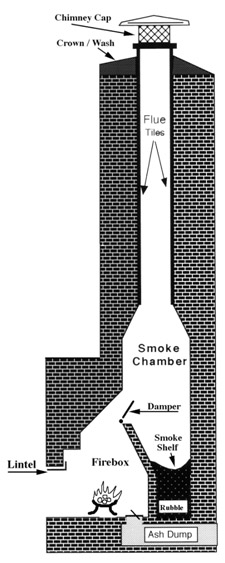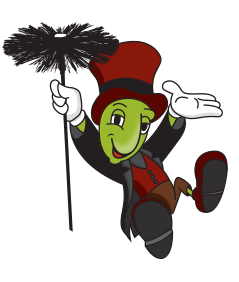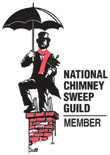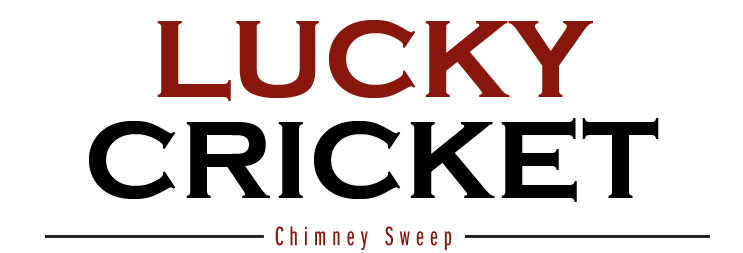 Inspection
Inspection
Each Fireplace goes through a full 20 point inspection insuring that everything is in good operating condition. Our inspections exceed Level 1 inspection as defined by the National Safety Institute of America (NSIA.) Not only do we check for things related directly to the fireplace such as the damper, flue and firebox, but also items such as the roof flashing, crown condition and fire extinguishers. It is our mission to make sure that all parts of your system are in good SAFE condition.
- Crown
- Chimney Cover/ Spark Arrester
- Height
- Stove pipe condition
- Smoke shelf
- Installation
- Fire Extinguisher
- Smoke Detectors
- Condition of System
- Fire Escape Plan
Hearth: Once used for the purpose of cooking the Hearth is the area in front of the firebox opening.
Firebox: This is the area where the fire is built. Fireboxes can be made of metal, brick, or concrete.
Facing: The facing is the front of the fireplace. This is often a coving of brick, flagstone, mortar, or stone.
Damper: Dampers are the part of the system that keeps air from exiting the fireplace when the system is not in use. A non working damper can add hundreds of dollars to a homeowner's energy bills. As a part of our inspection we make sure that your damper is working well and is not creating any problems that could lead to a house full of smoke. See damper page for more info.
Smoke Chamber: The smoke chamber is the area that is found between the firebox and the flue. This is often the area where smoke sits waiting to be pulled up the fireplace flue. Smoke chambers are mostly made of brick that is then troweled smooth using a high temp refractory cement.
Spark screens: Spark screens tackle the job of keeping sparks from leaving the firebox. Sparks that leave the firebox can ignite flammable items making for a very unsafe condition.
Tools: All fireplace owners should have proper tools for the care of the fireplace. These tools include shovels, pokers, and log handlers.
Back Wall: Located in the firebox is the back wall. The job of the back wall is to help force air up into the smoke chamber and to protect the rear wall of the fireplace structure. The back wall is very important and must be kept in good condition to insure safe burning. Loose bricks, cracked concrete and warped or burned through steal are all examples of back walls that are no longer safe and must be repaired.
Flue Tile: Most modern brick built fireplaces use flue tiles to transport gases out of the fireplace system. These flue tiles are made of clay and are capable of handling normal fire conditions. Some fireplaces do not use flue tiles and are instead lined with only brick and these types often need to be relined. Another case in which the flue must be relined is when the clay flue liners are either cracked or damaged in any way that makes them no longer able to contain flue gases.
Roof Flashing: Part of our inspection is checking the roof flashing to make sure that no water is getting by. Most often if there is a problem with the flashing a little tar will do the trick getting it back into good condition.
Crown Wash: The crown is the top section of the chimney. Crowns are most commonly made of mortar or concrete. Similarly to concrete, crowns often crack and deteriorate letting moisture enter the system. The crown should always be sealed using only products that are made for that use such as CrownSeal®. Never Use TAR.
Chimney Cover/ Sparkarrester: One of the most important items you can have on your fireplace is a spark arrester. Spark arresters do many wonderful things for your fireplace such as help keep sparks from exiting the system, keep rain out of the fireplace and don’t forget about keeping out animals. Spark arresters can also help with other problems like down drafts.
Height: The Height of a fireplace is very important in how the fireplace works. We check to make sure that all fireplaces have the proper height to function properly.
Stove pipe condition: Weather you have a stove or a factory built system the entire flue is checked to make sure that the pipe is in good condition and there are no separations.
Smoke Shelf: The smoke shelf is the area that is located behind the firewall. This area is created to help with down drafts and is also a place for rubble and debris. We check this area for larger debris that can create a fire hazard.
Installation: As a standard part of any inspection we check to make sure that the system was installed correctly. Poorly installed systems can lead to system damage resulting is costly repairs and even home fires or death.
Fire Extinguisher: Lucky Cricket Chimney Sweep recommends that all homes have fire extinguishers installed. At a minimum, there should be a Fire Extinguishers installed in the kitchen, garage, master bedroom and near any fire place.
Smoke detectors: Remembering to check the batteries in a smoke detector can save lives. It is important to have working smoke detectors all throughout the home.
Fire escape Plan: Having a good Fire escape Plan is important if your 8 or 85. Knowing what to do in case of a fire is very important. Not only is it important to have an idea what to do or where to go, but it’s also important especially with kids to practice, practice, and practice.




 Chimney Sweep in Tucson
Chimney Sweep in Tucson


